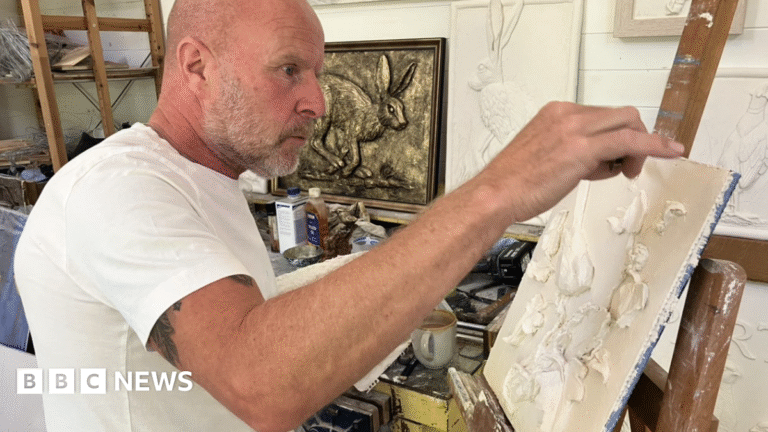Heritage Crafts believes the issues affecting pargeting include changing tastes in housing design and the strict restrictions imposed by conservation legislation.
It can also be expensive and takes time, which does not correlate with competitive tendering processes.
Mr Warren has seen all these problems, as well as commonly-used materials not being up to the task.
“Modern rendering is now resin, it’s not sand, cement and lime anymore, it’s prebagged and it doesn’t lend itself to pargeting,” he explained.
“Flat rendering is cheaper and some [building] designs are very boxy; it looks wrong on a modern house.”
Nevertheless, he is hopeful for the future. He has diversified by pargeting on to small panels which can be hung inside as works of art “that will last hundreds of years”.
“I’ve been doing it 35 years and I’ve never been out of work, but I have adapted by doing these smaller things,” he said.
“I started doing panels to take to shows, and because I don’t like going up scaffolding in the winter anymore.
“There are builders and developers, especially around here, that still want that look, it’s sellable.”
Heritage Crafts points out that practitioners need “considerable artistic talent” and also want a labour-intensive job.
There is no training school, apprenticeships or courses beyond the occasional introductory day school.
“You never stop learning,” said Mr Warren, who is self-taught.
“I think you need to be like myself, you’ve got to be enthusiastic and work for yourself.
“You have to have a bit of artistic flair in the first place.
“I could teach someone to a standard, but they have to have that bit about them to take it on their own.”





